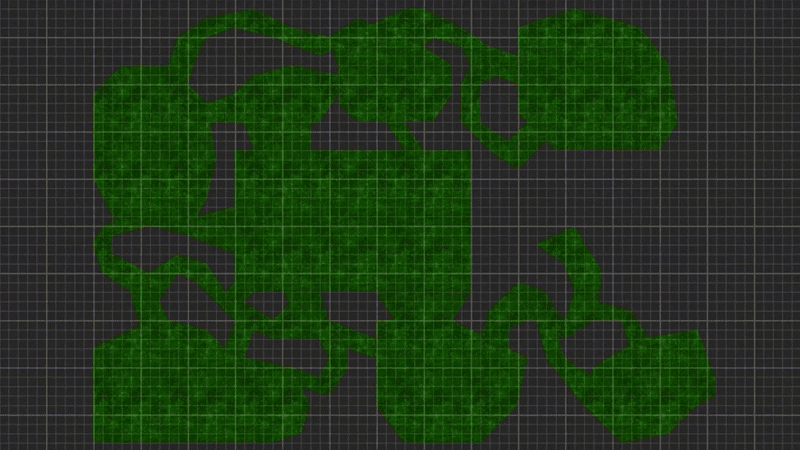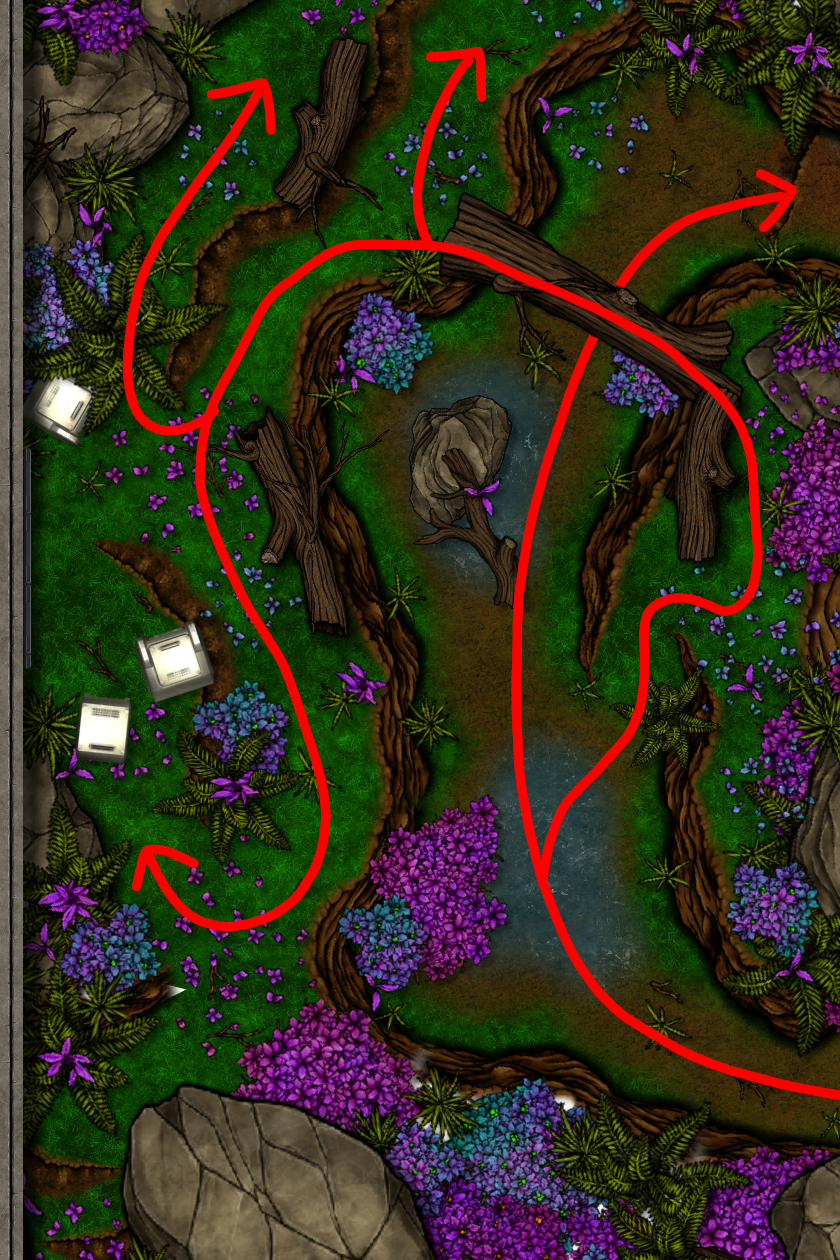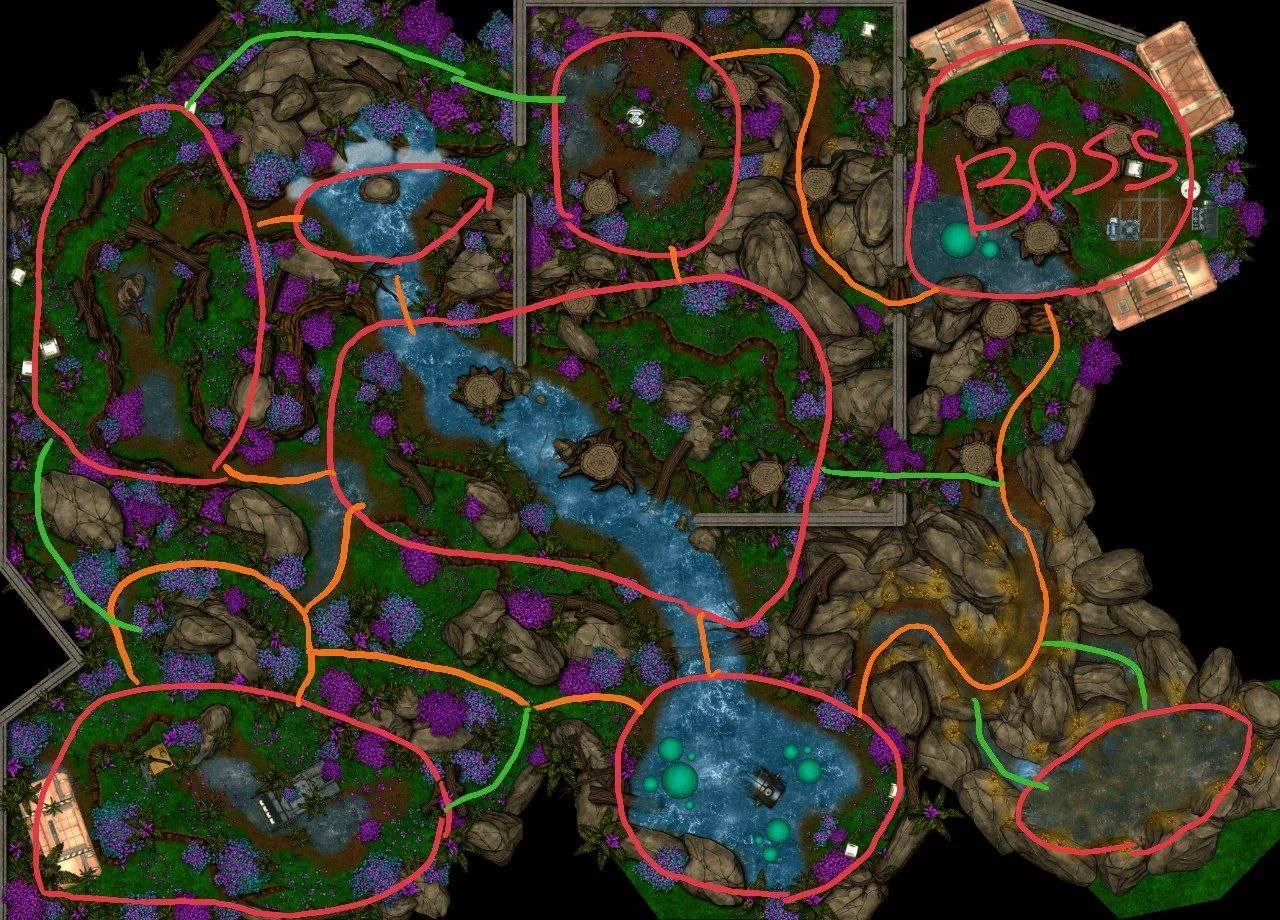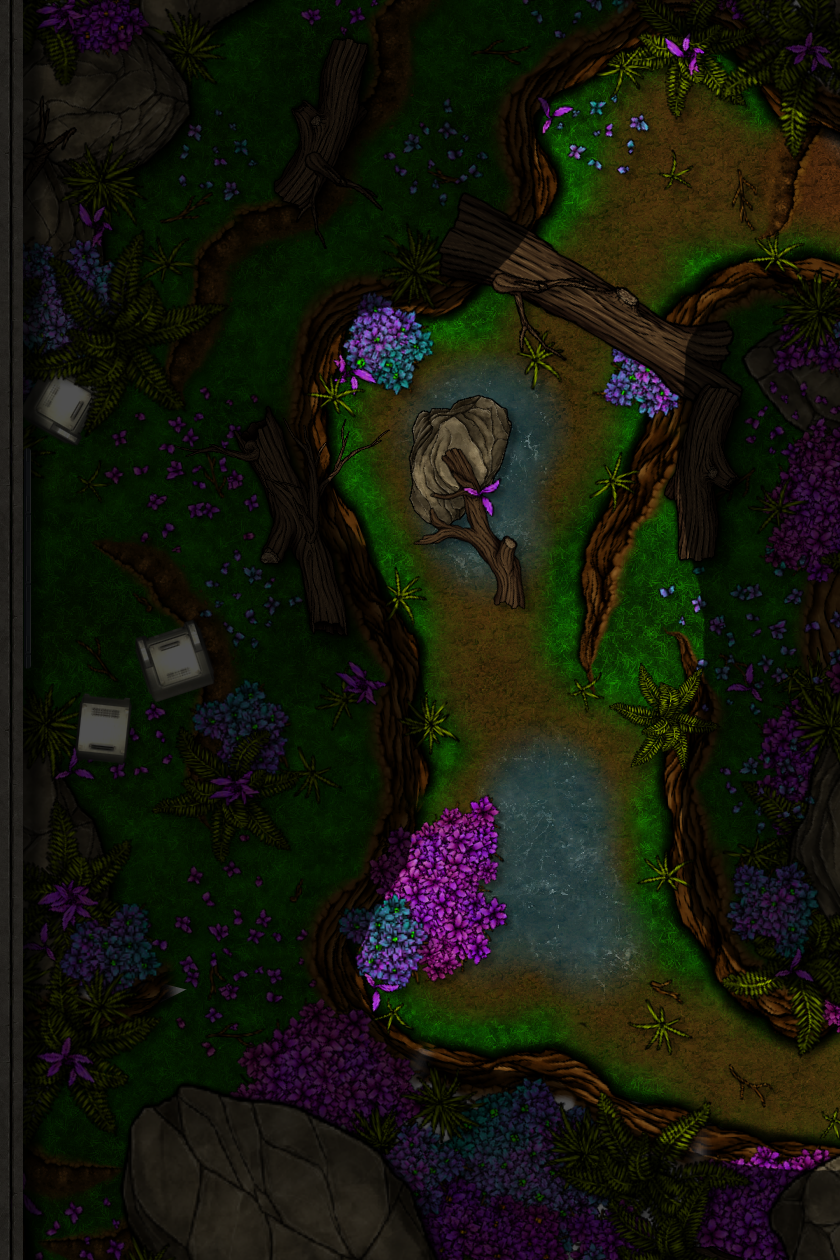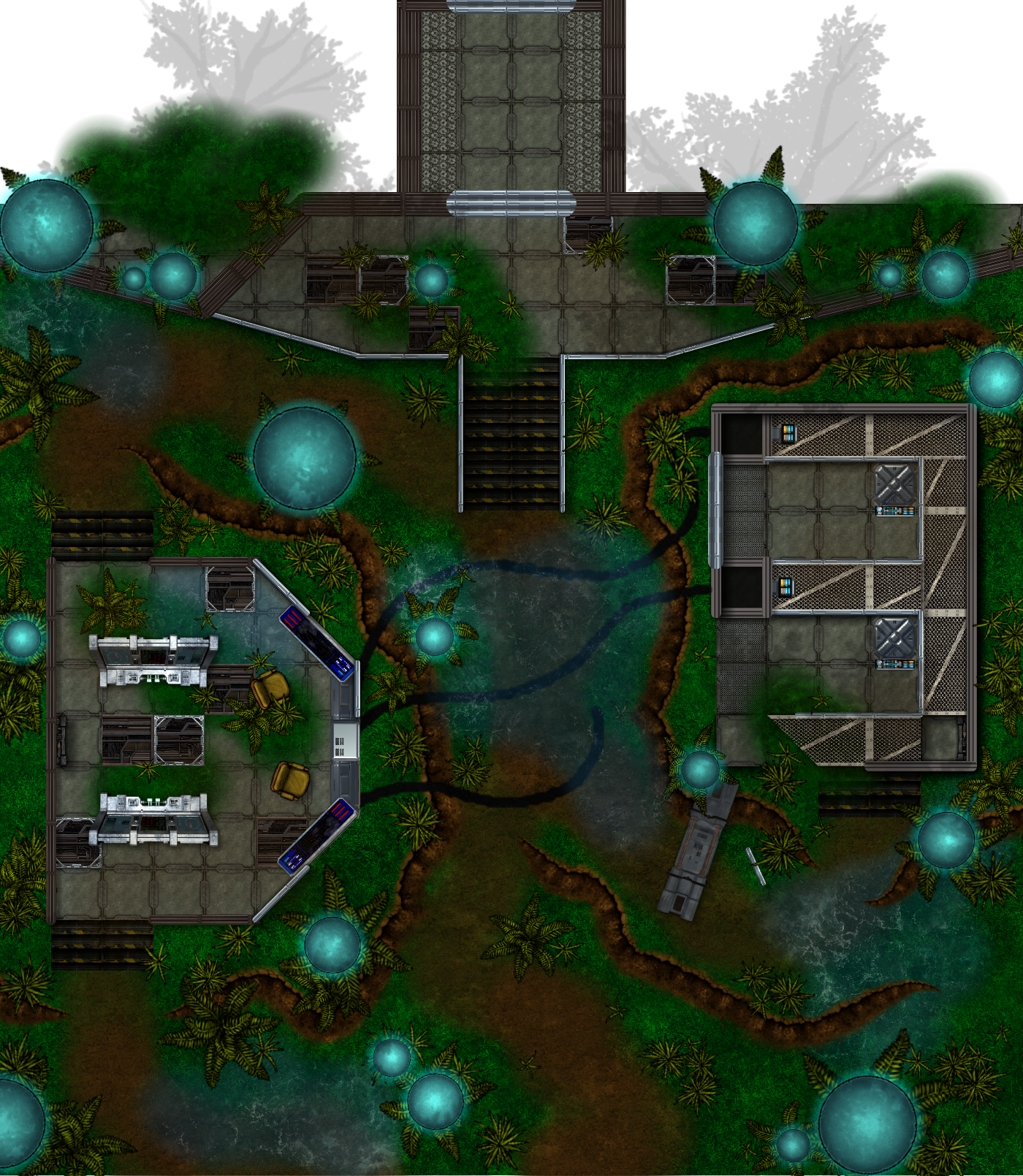Alganovar
Alganovar is a table-top roleplaying game with an emphasis on combat customization and experimentation. Explore a far future where a hundred worlds are enraptured in a neo-renaissance, reality is manipulated on a whim, and the precarious division of planetary nations threaten to plunge the galaxy into a second, final conflict.
Role: Solo Developer
Tenure: Ongoing
Team Size: 1
Platform: Physical
Contributions
Designed a comprehensive—playable—Table Top Roleplaying System from scratch
Extremely comfortable and deft manipulation of Google Workplace, Microsoft Office Suite, and Adobe Creative Suite for documentation and asset creation
Extensive QA testing and feedback collection on key mechanics and player retention across multiple game sessions
An entire galactic history built and written, complete with a Novel in the making
52 unique functional weapons with intuitive and detailed Skill Trees, packed with 12 associated perks each
36 playable Races and 12 Origins with holistic perks, creating customizable and intricate character creation
Intuitive and engaging combat system built with player agency, decision making, and sacrifice as the priority
30+ Playable Maps, meticulously constructed and tested for dynamic, asymmetric Turn-Based Combat Design
12 years of iterative improvement based on playtest feedback from local game shops and 100+ players, promoting healthy maintenance of regular Game Balance, systemic clarity, and Holistic Design
A Galaxy in a Book
Alganovar is my passion project twelve years in the making. I am the sole designer, director, and eventual publisher (probably). Every lesson I learn in the industry further refines this IP with deeper mechanics, accessible gameplay, and captivating worldbuilding.
There’s not much I can say about the game that my Contributions section does not already highlight. So instead, here is a sample of the most up-to-date version of the entire Alganovar game book.
And this is just one game book.
I have designed and written multiple books that act as supplementary material for the core Alganovar rule book, such as the comprehensive Character Sheet for players to create a galactic mercenary, priest, aristocrat, or more. The Galactic Emporium which contains 100+ items, Accessories, and Weapon Foundries for players to find, equip, and utilize on their journey. And entire Adventures which serve as material guides for running campaigns. These include content from maps to enemies, rewards to allies, and unique encounters spanning puzzles, vendors, battlegrounds, and of course, boss fights.
The Canyon room, as shown in Deep Kravyk
Alganovar: The Core Rulebook, version 0.7.0. If it fails to load immediately, please give it a minute. This is a SAMPLE document and does not contain everything!
Please note all content with regards to Alganovar is under copyright protection.
Putting Planets to Paper
Alganovar is crafted digitally, but it is primarily played on a table. The following is a catalogue of various maps created for the purposes of highlight my skills in level design, as well as a detailed breakdown of the creation process behind the level design in Alganovar.
The following is a Dungeon Map created as part of the Secure Future Adventure for Alganovar. For brief context, the dungeon takes place in the vastly overgrown streets of a buried alien city, to the point where streets have become rivers and skyscrapers have been hollowed out into trellises for trees. Players are seeking a shipment of seismic mines that were lost somewhere in the excavation depths.
The Dungeon map in question is called Deep Kravyk, named after the title of the buried city itself, Nasykravyk.
A timelapse of creating the dungeon Deep Kravyk, beginning with a basic floorplan before filling in each room
Deep Dive into Deep Kravyk
At first glance, Deep Kravyk does not appear to have a very coherent layout. If anything, its completed state likely appears cluttered (the GIF compression showcasing the timelapse of the map’s progress certainly doesn’t do any favors!).
But the dungeon is deliberately designed. In the outline showcase to the right, you can see how the map has been broken up into different sections: Hallways, Rooms, and Secret Passages.
These color markers highlight the the map’s overall structure, but they do a poor job of explaining the design process itself when creating the dungeon. How key level design concepts were implemented are listed below:
Framing: Pools of water lead players forward, guiding them through the natural depression(s) in the landscape. These dirt paths highlight the hallways through the labyrinthian foliage
Landmarking: A large river bisects the entire dungeon map, providing a crucial reference point for players to orient themselves, as well as a method of traversal north to south
Breadcrumbing: Though the layout itself does not offer the referential positions of combatants, key features such as closed pathways and unplundered loot caches serve to inform and guide players to unexplored areas
Echoing: Repeated tight squeezes between boulders reinforce the suspense and suffocating atmosphere of an overgrown cityscape, as well as informing players where room entrances are (and how difficult retreat could be should their situation turn grim)
In order to explain the design process of dungeon building, let’s take a closer look at one of Deep Kravyk’s rooms to break down how an encounter is designed in Alganovar.
A map of the movement flow for players. Players enter The Canyon from the southeast. Notice how the lines of the canyon walls guide the players forward
The LoS enemies have on a player as they enter The Canyon room. Multiple attacks from multiple angles with no cover. Yikes!
The White Palace
Description
Deep inside a Metamorphose church, the party enters the digital domain known as the White Palace. The party must search the holy grounds for clues where Malfeasance is hidden, a packet of code with the power to rewrite the future of an entire species.
Encounter Type
This is a social-puzzle based level. Players must infiltrate the holy temple and question acolytes they meet without blowing their cover. Using information they glean, they must then solve puzzles strewn throughout the level in order to access the Administer’s console.
Features
Non-Euclidean pathways that defy reality and bend in unconventional ways, making navigation a puzzle in of itself
Shifting rules that change based on the admin privileges players gain access to, such as the inability to cross water or touch shadows
An intricate and satisfying puzzle using the map itself as a key
The players begin in the southwest room of the dungeon, with the natural progression of the map leading players to end in the northeast room
Deep Kravyk: The Canyon
Alganovar is a combat-centric TTRPG. As a result, most maps are created with the intent of turn based combat in mind. However, in order to keep situations fresh, variety in encounter design is paramount—especially in matters of conflict. Deep Kravyk has 3 combat-focused encounters in its design: The Crossing, The Boss Room, and The Canyon. In order to highlight the philosophies behind Alganovar’s level design, we will take a closer look at The Canyon.
The Canyon room is the closest encounter to the start of the Dungeon, positioned just north of the players’ starting room in the southwest corner of the map. This is important to note; The Canyon is likely the first room players will explore beyond their starting chamber, it needs to achieve 3 crucial goals:
Tone: Set the tone for the dungeon. The cramped overgrowth should feel unsettling and dangerous, not because of environmental hazards, but because maneuverability and vision is limited with less room to react. This is unfavorable, uncharted territory
Challenge: Create an asymmetric combat encounter heavily favoring enemies. This is hostile territory, and the players are trespassing without knowing. Players should be surprised that there are enemies in the first place, and even more surprised to find themselves suddenly mispositioned
Story: The location of the missing seismic mines is the players’ goal in the dungeon. However, foreshadowing of another, more recent visitor has been seeded throughout the ruins. Inclusion of these elements should further tell the story of the lost shipment, but the trials players face on their pursuit is the more ciritical, personal part of the story.
The first step to accomplishing these goals was to draft a layout for how the room was going to be constructed. Whenever I approach level design (coming from a background in narrative design and writing), I believe a level should tell a story.
The flow of a level’s encounter spaces should guide a player like a book with a beginning, middle, and end. Every room (or floor) should provide meaningful progression and pacing as “acts” with memorable moments. To accomplish this task, metrics were essential.
Similar to Dungeons and Dragons, Alganovar’s maps (and all of its ranged systems) are constructed on a square grid, and distances are measured using the imperial measurement system. Every square on the grid represents a 5ft square area. This is essential for understanding the scale of areas relative to players, as each token on the board occupies a square which cannot overlap with others.
For another point of reference, the default movement mechanics of players allow them to travel up to 30ft, unhindered, during their turn. Pair this with the cramped, overgrown nature of the dungeon, and rarely are players ever going to travel far when its their time to shine. Ergo, it would be poor design, thematically and mechanically, to create spacious spaces that incentivize turns requiring 30ft of movement or more.
Regardless, I find vast areas are often bad designs to begin with. When constructing a new level for Alganovar or any other TTRPG, I have something I like to call “The 3 Square Rule”. The rule is very simple:
When building a map, there should never be empty space for more than 3 squares.
It is a very simple rule, but it simply works. It works for the scale at which players interact with the environment. Be it something as solid as a wall, as small as a bush, a chest, a button, a ridge, or a puddle, making sure there are very few instances of dead, open space in a level design adds so much decision making and dynamic movement to the level. Suddenly, you don’t just have a melee player running up to a target and smacking them. Now, they might have to consider the route they need to reach their target. A ranged player must now consider vantage points… and cover against retaliation.
That is not to say open spaces are NEVER a good element. They can be effective in their own right, such as making players feel exposed. But in my playtests, successful and memorable maps have shown higher player retention and attention than not when following my 3 Square Rule.
Thus, by paying careful consideration for the Tone I wanted for the dungeon and to the 3 Square Rule, I designed terrain naturally hostile towards the intrusion of the players. The Canyon prioritizes funneling players through a tight choke point into a flat, open area, flanked by canyon walls and Rough Terrain.
The significant elevation difference between the bottom level of The Canyon and the top level. This also enforces vertical scale on a 2D medium
The LoS enemies have on a player once they commit to entering the room. Notice how two enemies actually lose sight of the player
The Talgaria
Description
The seismic mines have been placed. All that remains now is to arm them. The party must enter the bowels of the desolate Talgaria, plant the charges, and lure the Azoic to the ruins of the warship before blasting it to nothing but slag.
Encounter Type
This is a dungeon level. Players must traverse the overgrown depths of the Talgaria and plant seismic charges at key locations along its interior. Once all charges are set, the players must then lure the ancient Azoic to their location and escape before the detonation.
Features
Unrivaled size. Every corridor leads to some discovery, whether it be a lost relic, mysterious lore, or a perilous trap. Exploration is highly encouraged!
3 levels with a stunning ravine connecting the entire ship together
Puzzles, combat, social encounters, and more! Some blend together to create dynamic encounters with variable outcomes
The bare-bones of The Canyon room, overlaid with a grid. Each square represents a 5ft square area
The layout of Rough Terrain patches in The Canyon. Note the high density near the entrance to apply pressure on players
Challenging players with the Canyon Room went hand-in-hand once the layout was figured out. Given the map’s opening “fish-in-a-barrel” design, The Canyon purposefully sets players up for a nasty, ambush. From 15ft above them. From multiple angles. With no cover.
At first, this intentional ambush my seem unfair. To that I say… sort of! That is the point! On top of informing the hostile, uneasy tone I wanted for Deep Kravyk (despite Deep Kravyk’s level design built around a non-linear progression flow), players are generally guided towards The Canyon room as the second room to explore. This means that The Canyon will likely be the first room players enter past the entrance. And, at the start of this dungeon, players’ characters are at their strongest. They are full on their combat capabilities. They will be fully stocked on supplies, at full Health, and at full charge for all their special tactical tricks.
That is to say, The Canyon room is designed to force fully-prepared players into attrition for the rest of the dungeon.
Despite how asymmetric the battlefield is for The Canyon, I would hesitate calling it outright unfair. The truth of the matter is, yes, the odds are stacked against the players, but they still get to react to the situation on their Turn(s), respectively.
Outside of any number of tools a player may have at this point in the game (for example, a Grapple Hook could easily scale the canyon walls and bring a player on level with the enemies), The Canyon room is deliberately designed to force players into an unfavorable situation. What is the best solution for escaping, then? Why, doing something even More uncomfortable, of course!
Counterintuitively, players that push further into the canyon actually improve their position.
Though still pinned down from gunfire, the actual positional advantage a player gains by reaching the cover in the center of the ravine dramatically helps them during this fight. During a playtest session, this particular fight dynamic captivated play testers due to the surprising benefit that emerged just from committing to running into the room.
Too often are combat encounters designed (and approached) from a front-to-back style. Deal with the largest threats closest to you, make space for yourself, then push forward. It makes sense.
But for The Canyon room, pushing past the line of fire is brash and unconventional. A middle-to-front attack? An uncertain player may hesitate, and in turn, fall under further duress. And yet, committing to a bold and risky maneuver is what makes The Canyon extremely memorable for players, which in turn helps to tell their Story. This kind of level design also helps to vary the pool of other combat encounters throughout Deep Kravyk by encouraging unconventional tactics.
More Maps, More Story
Deep Kravyk’s canyon is but one room in one dungeon, which is one map out of dozens of levels I have designed for Alganovar. Other maps from the same Secure Future Adventure contain the same level of care and polish in their designs, each accomplishing different goals and curated for different encounters. Take a look at the other samples below!
The Command Tower
Description
The party finally find themselves at the foundations of a massive KoDex command tower and at the precipice of answers. Find a way to open the blast doors and ascend the tower.
Encounter Type
This is a defense-based level, where players must hold their ground and defend an NPC as they cut through the broken metal blast doors of the command tower’s entrance.
Features
Advantageous vantage points for maximum map coverage
Warehouse controls to allow players to power up and pilot a mech suit if they successfully fix the console
Traps that can be activated by players, such as large halakyon bulbs that can be popped to displace targets, or a broken cable in the center of the map that can turn a puddle into a shocking surprise
3 lanes for enemy waves converging towards a central chokepoint
Heart of The Nasyk Sepulcher
Description
It has all lead to this. The party must stop Asta Constello from completing Project: Pellucid Night and uncover the true purpose of the ancient Luperi city of Nasykravyk. There’s no turning back now.
Encounter Type
This is a boss level. Players must fight Gausan, Fist of the Madame, and prevent him from stealing the heart of Nasykravyk.
Features
Dynamic battlefield. Ancient machinery reacts to combat around it, activating to produce volatile hazards for the players and the boss
Climactic phase changes based on the boss’s health, spinning the level’s layout on a whim
Powerful boons can be harvested from the crumbling crystal resin of the machinery, granting players fleeting, volatile bonuses to break through the boss’s impregnable defenses



